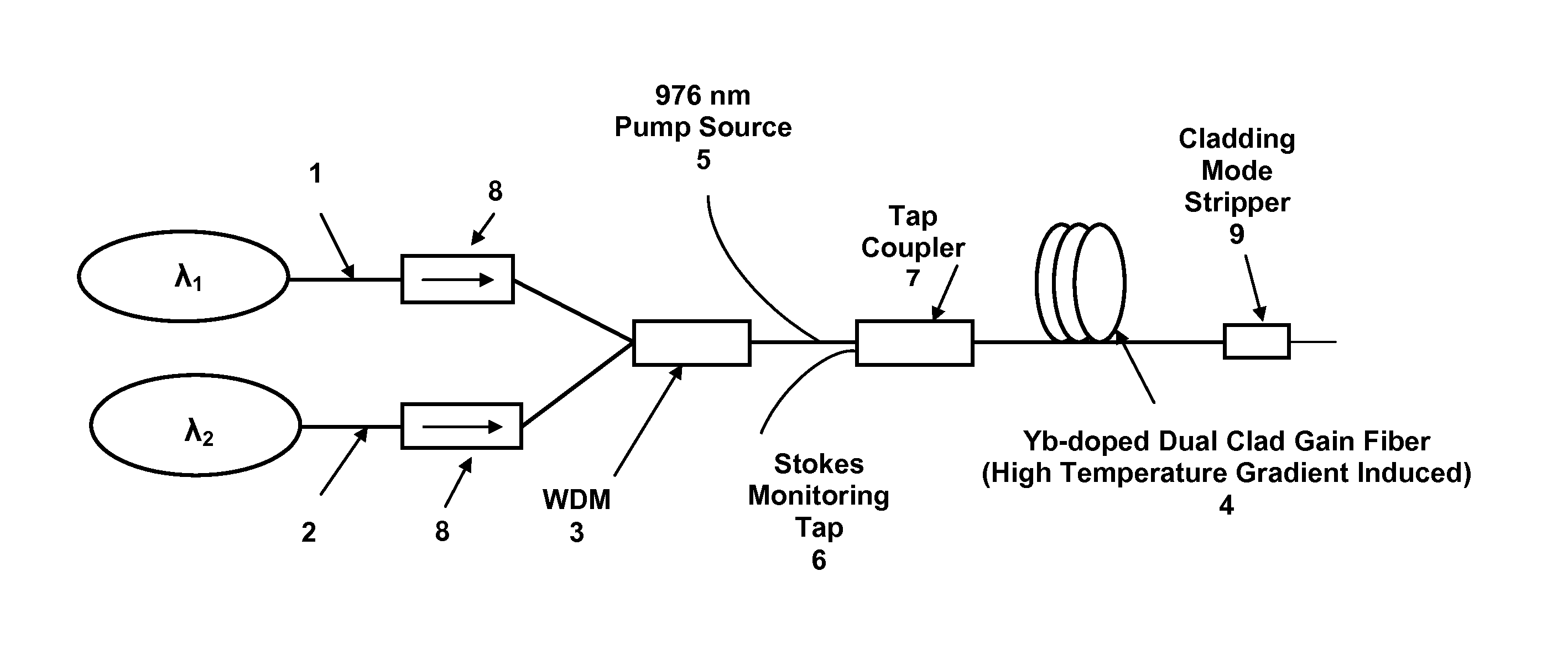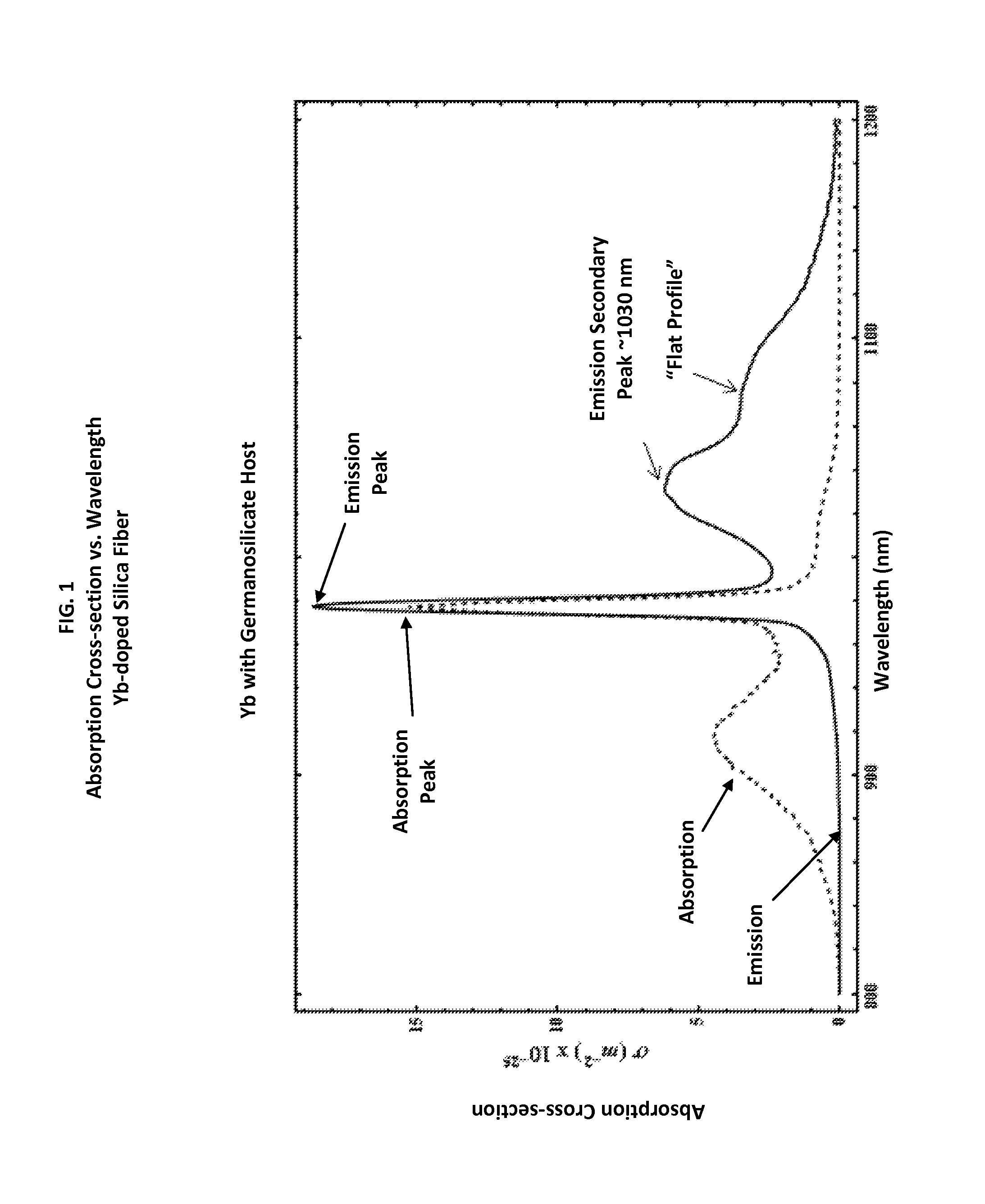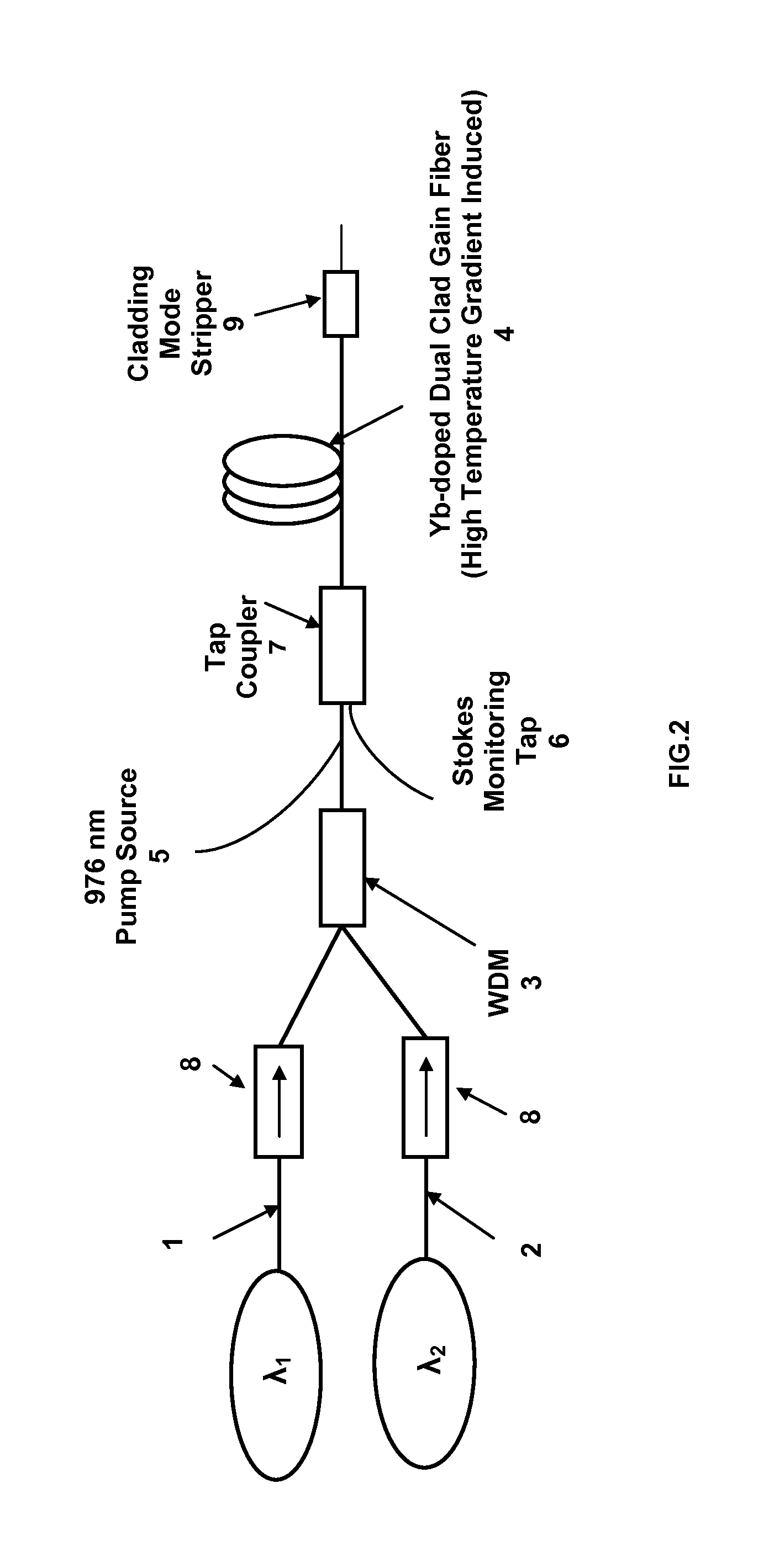Scalable monolithic single frequency fiber amplifier
a monolithic, single-frequency technology, applied in the field of optical fibers, can solve the problems of reducing the limiting the performance of the fiber, and increasing the sbs threshold through the decrease of length, so as to achieve a short effective length of the fiber, and reduce the sbs threshold
- Summary
- Abstract
- Description
- Claims
- Application Information
AI Technical Summary
Benefits of technology
Problems solved by technology
Method used
Image
Examples
examples
[0039]A double clad fiber with a core diameter of 25 μm and an inner cladding diameter of 400 μm. The outer cladding and fiber coating extends to 550 μm and is composed of a polymer material. The maximum operating temperature of the polymer is 150° C. Three cases are compared: I) a co-pumped single seed single frequency amplifier operating at 1080 nm; II) a counter-pumped single seed single frequency amplifier operating at 1080 nm; and III) a two signal co-pumped amplifier with the broadband signal at 1030 nm and the single frequency signal at 1080 nm. All fibers were 6.5 m in length and each of the cases was optimized to operate at the maximum SBS threshold by controlling the convective cooling coefficient, h, described above.
[0040]FIG. 3 shows plots of the evolution of the single frequency (narrow-linewidth) signals (1080 nm) along the length of the fiber. The output powers are normalized such that the output power from case I is equal to 1. Note that case II provided approximatel...
PUM
 Login to View More
Login to View More Abstract
Description
Claims
Application Information
 Login to View More
Login to View More - R&D
- Intellectual Property
- Life Sciences
- Materials
- Tech Scout
- Unparalleled Data Quality
- Higher Quality Content
- 60% Fewer Hallucinations
Browse by: Latest US Patents, China's latest patents, Technical Efficacy Thesaurus, Application Domain, Technology Topic, Popular Technical Reports.
© 2025 PatSnap. All rights reserved.Legal|Privacy policy|Modern Slavery Act Transparency Statement|Sitemap|About US| Contact US: help@patsnap.com



